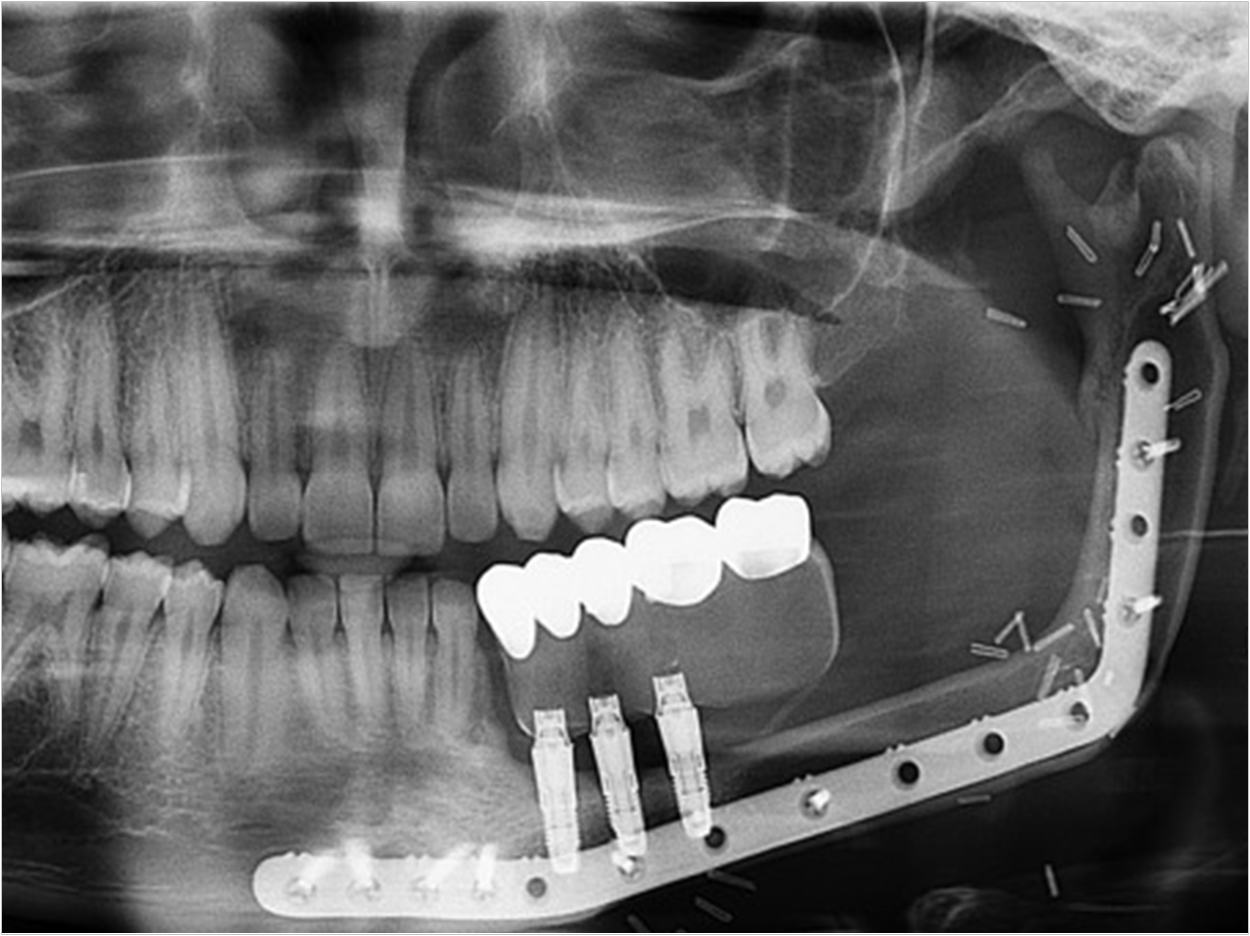
A protocol involving tumor removal and immediate jaw reconstruction, replacing jawbone with viable bone from the patient’s own leg, can effectively treat lower-jaw tumors with few complications in children, according to the American Association of Oral and Maxillofacial Surgeons (AAOMS).
During the study, no tumors recurred after the procedure using microvascular free fibula grafts, which fill in jawbone with fibula leg bone. The grafts have their own blood supply through small blood vessels moved with the transplanted bone.
Also, no complications resulted from eight dental implants, which replaced missing teeth. Three minor complications, two incision reopenings and an infection, occurred within 30 days after the procedure at the site where the fibula was removed.
The study examined 15 children at Emory University or Children’s Healthcare of Atlanta who had a tumor removed from their lower jaw before jaw reconstruction involved free fibula grafts.
The patients underwent a four-stage protocol consisting of planning, exams, and evaluation before surgery, surgery, postsurgical care in an intensive care unit, including recommendations from physical therapy, and tooth replacement using dental implants.
Ten patients received a removable dental appliance or procedures to prepare for implants, and two patients received dental implants.
The protocol used digital planning to prepare for tumor location, extent, and removal, the graft, and the reconstruction plate, reducing surgical time and helping determine exact insertion of the fibula for dental implant placement, the researchers said.
The use of vascularized free fibula grafts for lower jaw reconstruction is more common in adults than children, the researchers said, and few surgeons have significant experience with the technique.
Using the grafts in children poses obstacles, the researchers continued, including unknown growth and need for longer sedation, but it is suitable for lower jaw reconstruction because of length, expected blood supply, and strength for dental rehabilitation.
The researchers said that their staged protocol shortens the time to return to function while improving quality of life.
The study, “A Protocol for Resection and Immediate Reconstruction of Pediatric Mandibles Using Microvascular Free Fibula Flaps,” was published by the Journal of Oral and Maxillofacial Surgery.
Related Articles
Surgeons Rebuild Jaw and Palate in a Single-Day Procedure
Plastic Mixed With Bone Powder for 3-D Printed Replacement Bones
Vitamin D Deficiency and Early Implant Failure: What Every Clinician Should Know


